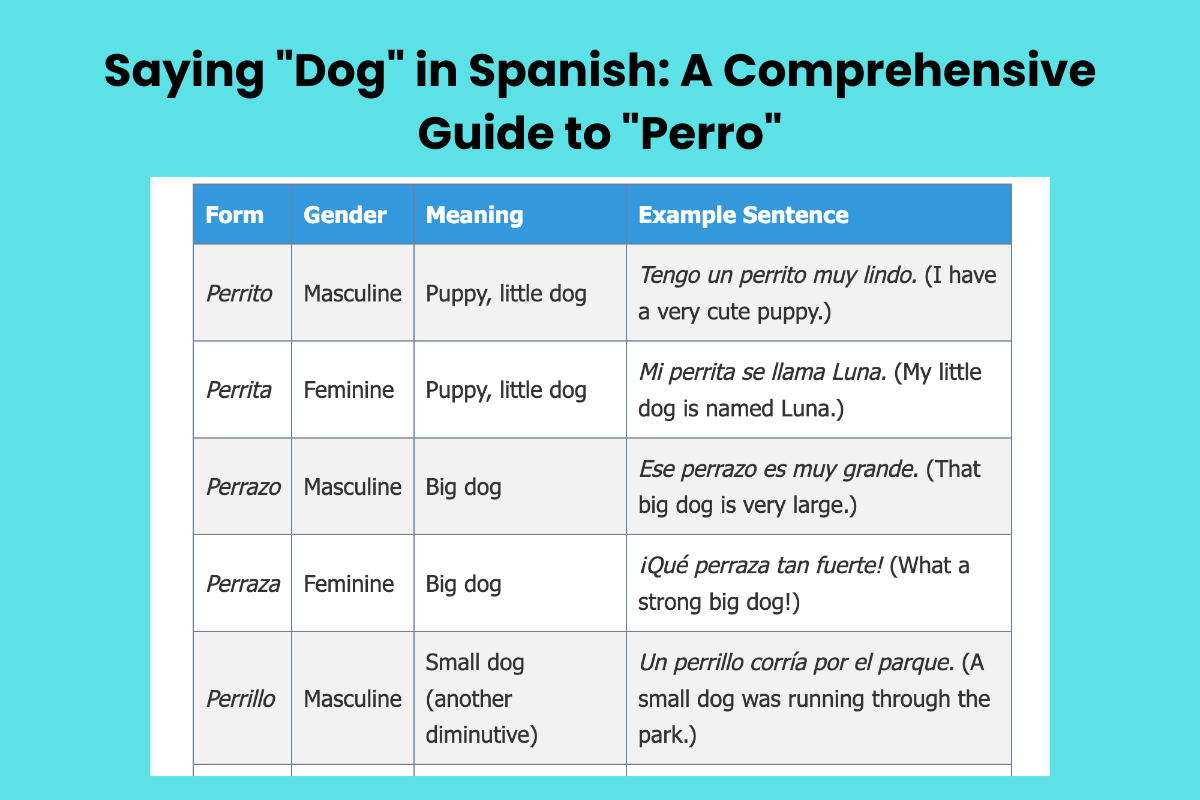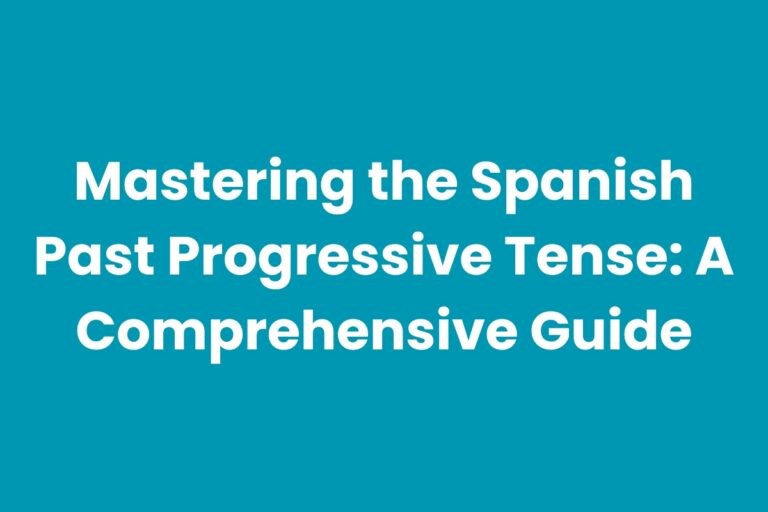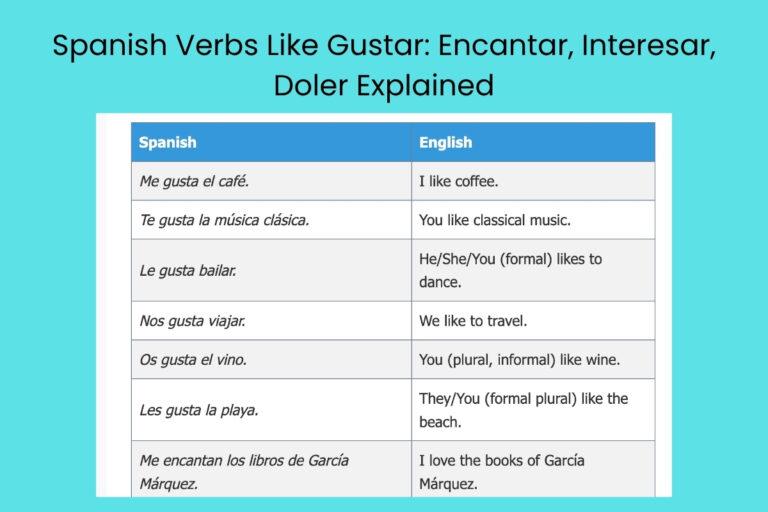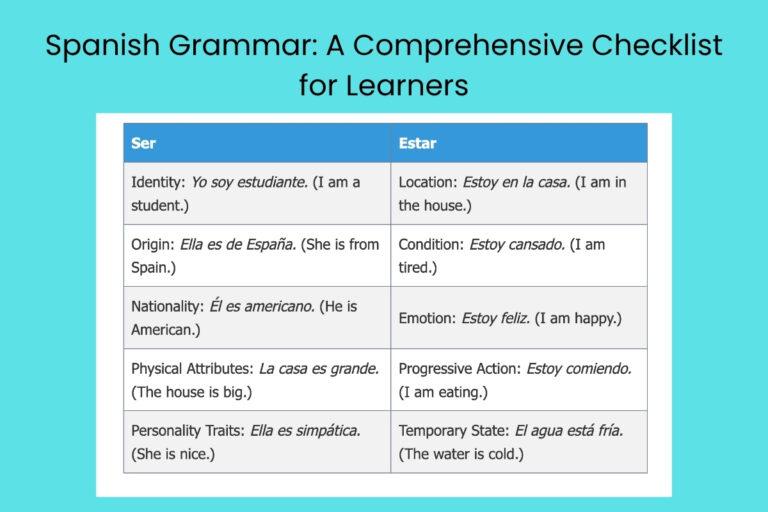Saying “Dog” in Spanish: A Comprehensive Guide to “Perro”
Understanding how to say “dog” in Spanish, along with its nuances and related vocabulary, is essential for anyone learning the language. This seemingly simple word opens doors to a broader understanding of Spanish grammar, cultural context, and idiomatic expressions.
This guide provides a thorough exploration of the word “perro,” covering its various forms, uses, and the common pitfalls learners often encounter. Whether you’re a beginner just starting your Spanish journey or an intermediate student looking to refine your skills, this article will equip you with the knowledge and confidence to use “perro” correctly and effectively.
This guide is designed for Spanish language learners of all levels, from beginners to advanced students. It is also helpful for travelers planning a trip to Spanish-speaking countries, as well as anyone interested in expanding their vocabulary and improving their overall communication skills in Spanish.
By mastering the usage of “perro,” you will enhance your ability to describe animals, interact with native speakers, and navigate everyday situations with greater fluency and accuracy.
Table of Contents
- Definition of “Perro”
- Structural Breakdown of “Perro”
- Gender and Number: “Perro,” “Perra,” “Perros,” “Perras”
- Diminutives and Augmentatives: “Perrito,” “Perrazo,” etc.
- Examples of “Perro” in Sentences
- Usage Rules for “Perro”
- Common Mistakes When Using “Perro”
- Practice Exercises
- Advanced Topics: “Perro” in Idiomatic Expressions and Slang
- Frequently Asked Questions
- Conclusion
Definition of “Perro”
“Perro” is the Spanish word for “dog.” It is a noun, specifically a common noun, referring to a domesticated mammal of the family Canidae. The word encompasses various breeds, sizes, and types of dogs.
Its primary function is to identify and name this animal.
In a broader context, “perro” can also be used metaphorically or idiomatically. It can describe a person, often with negative connotations, such as being disloyal or mean.
However, the literal meaning remains the most common and straightforward use of the word.
Structural Breakdown of “Perro”
The word “perro” consists of five letters. It is a relatively simple word structurally, with a clear pronunciation. The double “r” (rr) indicates a strong, trilled sound, which is a key feature of Spanish pronunciation. Understanding the pronunciation of the double “r” is crucial for accurate and fluent speech.
The word follows the typical Spanish noun structure, with a gender (masculine) and number (singular). These features influence the articles and adjectives that accompany the noun. For instance, you would say “el perro” (the dog), using the masculine singular definite article “el.”
Gender and Number: “Perro,” “Perra,” “Perros,” “Perras”
In Spanish, nouns have gender, either masculine or feminine. “Perro” is masculine.
The feminine form of “perro” is “perra,” which refers to a female dog or bitch. The plural forms are “perros” (masculine plural) and “perras” (feminine plural), referring to multiple dogs of either male or female gender, respectively.
When referring to a mixed-gender group of dogs, the masculine plural “perros” is generally used.
Understanding gender and number agreement is fundamental to using “perro” correctly. The articles (el, la, los, las) and adjectives must agree in gender and number with the noun they modify.
Gender and Number Agreement
The following table illustrates the gender and number variations of “perro”:
| Form | Gender | Number | Meaning |
|---|---|---|---|
| Perro | Masculine | Singular | Dog (male) |
| Perra | Feminine | Singular | Dog (female) |
| Perros | Masculine | Plural | Dogs (male or mixed gender) |
| Perras | Feminine | Plural | Dogs (female) |
Diminutives and Augmentatives: “Perrito,” “Perrazo,” etc.
Spanish uses diminutives and augmentatives to express size, endearment, or intensity. The diminutive form of “perro” is “perrito” (masculine) or “perrita” (feminine), meaning “puppy” or “little dog.” The augmentative form is “perrazo” (masculine) or “perraza” (feminine), which can mean “big dog” or, depending on the context, can be used ironically or humorously.
The choice of diminutive or augmentative depends on the context and the speaker’s intention. Diminutives often convey affection, while augmentatives can emphasize size or express a strong emotion.
Examples of Diminutives and Augmentatives
This table shows examples of diminutive and augmentative forms of “perro” and “perra”:
| Form | Gender | Meaning | Example Sentence |
|---|---|---|---|
| Perrito | Masculine | Puppy, little dog | Tengo un perrito muy lindo. (I have a very cute puppy.) |
| Perrita | Feminine | Puppy, little dog | Mi perrita se llama Luna. (My little dog is named Luna.) |
| Perrazo | Masculine | Big dog | Ese perrazo es muy grande. (That big dog is very large.) |
| Perraza | Feminine | Big dog | ¡Qué perraza tan fuerte! (What a strong big dog!) |
| Perrillo | Masculine | Small dog (another diminutive) | Un perrillo corría por el parque. (A small dog was running through the park.) |
| Perrilla | Feminine | Small dog (another diminutive) | La perrilla es muy juguetona. (The small dog is very playful.) |
Examples of “Perro” in Sentences
The following sections provide various examples of how “perro” can be used in different contexts, illustrating its versatility and nuances.
General Examples
These examples demonstrate the basic usage of “perro” in simple sentences.
| Sentence | Translation |
|---|---|
| El perro ladra. | The dog barks. |
| Tengo un perro. | I have a dog. |
| ¿Tienes un perro? | Do you have a dog? |
| Mi perro es muy amigable. | My dog is very friendly. |
| El perro está durmiendo. | The dog is sleeping. |
| Ese perro es grande. | That dog is big. |
| El perro come mucho. | The dog eats a lot. |
| ¿Dónde está el perro? | Where is the dog? |
| El perro juega en el parque. | The dog plays in the park. |
| Me gusta el perro. | I like the dog. |
| El perro es de mi vecino. | The dog belongs to my neighbor. |
| El perro necesita agua. | The dog needs water. |
| El perro mueve la cola. | The dog wags its tail. |
| El perro es muy leal. | The dog is very loyal. |
| El perro tiene un hueso. | The dog has a bone. |
| El perro corre rápido. | The dog runs fast. |
| El perro está feliz. | The dog is happy. |
| El perro es mi mejor amigo. | The dog is my best friend. |
| El perro está entrenado. | The dog is trained. |
| El perro vive en la casa. | The dog lives in the house. |
| Los perros necesitan cuidados. | Dogs need care. |
| Muchos perros viven en mi barrio. | Many dogs live in my neighborhood. |
Descriptive Examples
These examples use adjectives to describe the dog, providing more detailed information.
| Sentence | Translation |
|---|---|
| El perro negro es muy grande. | The black dog is very big. |
| La perra blanca es muy juguetona. | The white dog is very playful. |
| Tengo un perro pequeño y marrón. | I have a small, brown dog. |
| El perro viejo duerme mucho. | The old dog sleeps a lot. |
| Ese perro callejero necesita ayuda. | That stray dog needs help. |
| El perro guardián es muy valiente. | The guard dog is very brave. |
| La perra labradora es muy inteligente. | The Labrador dog is very intelligent. |
| El perro pastor es muy obediente. | The shepherd dog is very obedient. |
| El perro peludo necesita un corte de pelo. | The furry dog needs a haircut. |
| La perra flaca necesita comer más. | The skinny dog needs to eat more. |
| El perro gordo es muy divertido. | The fat dog is very funny. |
| La perra dormilona siempre está durmiendo. | The sleepy dog is always sleeping. |
| El perro enojado está gruñendo. | The angry dog is growling. |
| La perra feliz está saltando. | The happy dog is jumping. |
| El perro cansado se acuesta. | The tired dog lies down. |
| La perra asustada se esconde. | The scared dog hides. |
| El perro curioso está oliendo. | The curious dog is sniffing. |
| La perra cariñosa está lamiendo. | The affectionate dog is licking. |
| El perro juguetón está corriendo. | The playful dog is running. |
| La perra silenciosa no ladra mucho. | The quiet dog doesn’t bark much. |
| El perro ruidoso ladra todo el tiempo. | The noisy dog barks all the time. |
| La perra joven está aprendiendo trucos. | The young dog is learning tricks. |
Idiomatic Examples
“Perro” also appears in some Spanish idioms. Note that some of these idioms might have negative connotations.
| Idiom | Meaning | Example Sentence | Translation |
|---|---|---|---|
| Llevarse como el perro y el gato | To fight like cats and dogs | Esos dos hermanos se llevan como el perro y el gato. | Those two brothers fight like cats and dogs. |
| Estar como un perro | To be very tired or sick | Después de la carrera, estoy como un perro. | After the race, I am very tired. |
| Perro que ladra no muerde | Barking dogs seldom bite | No te preocupes, perro que ladra no muerde. | Don’t worry, barking dogs seldom bite. |
| Una perra vida | A dog’s life (a hard life) | Después de la guerra, tuvo una perra vida. | After the war, he had a dog’s life. |
| Ser un perro | To be mean or a bad person (offensive) | No seas un perro, comparte tu comida. | Don’t be mean, share your food. |
| Tratar a alguien como un perro | To treat someone badly | No debes tratar a nadie como un perro. | You shouldn’t treat anyone badly. |
| A otro perro con ese hueso | Tell it to the marines (I don’t believe you) | Me dijo que ganó la lotería, a otro perro con ese hueso. | He told me he won the lottery, tell it to the marines. |
Usage Rules for “Perro”
Using “perro” correctly involves understanding grammatical agreement and contextual appropriateness. These rules ensure that your usage is accurate and natural within the Spanish language.
Grammatical Agreement
As mentioned earlier, “perro” must agree in gender and number with the articles and adjectives that modify it. This is a fundamental aspect of Spanish grammar.
Incorrect agreement can lead to confusion or sound unnatural to native speakers.
Examples of Correct Agreement:
- El perro grande (The big dog – masculine singular)
- La perra grande (The big dog – feminine singular)
- Los perros grandes (The big dogs – masculine plural)
- Las perras grandes (The big dogs – feminine plural)
Contextual Appropriateness
While “perro” is a common and generally neutral word, it’s essential to be aware of its potential negative connotations in idiomatic expressions. Using “perro” to describe a person can be offensive, so it’s crucial to consider the context and your audience.
Example of Contextually Appropriate Use:
- Amo a mi perro. (I love my dog.) – This is a perfectly acceptable and common statement.
Example of Contextually Inappropriate Use:
- Es un perro. (He is a dog.) – This can be interpreted as saying someone is a bad or mean person. Avoid using it in this way unless you intend to be offensive.
Common Mistakes When Using “Perro”
Learners often make mistakes with gender agreement, pronunciation, and idiomatic usage. Being aware of these common errors can help you avoid them.
| Incorrect | Correct | Explanation |
|---|---|---|
| La perro | El perro | “Perro” is masculine, so it requires the masculine article “el.” |
| El perra | La perra | “Perra” is feminine (female dog), so it requires the feminine article “la.” |
| Los perra | Las perras | “Perras” is feminine plural, so it requires the feminine plural article “las.” |
| Tengo un perrita | Tengo un perrito | If referring to a male puppy, use “perrito”. “Perrita” is for a female puppy. |
| Mis perros es blancos. | Mis perros son blancos. | The verb “ser” (to be) must agree with the subject in number. |
Practice Exercises
These exercises will help you practice using “perro” correctly in various contexts.
Exercise 1: Fill in the Blanks
Fill in the blanks with the correct form of “perro” (perro, perra, perros, perras).
| Question | Answer |
|---|---|
| 1. Yo tengo un _____. | perro |
| 2. Ella tiene dos _____. | perros |
| 3. ¿Es tu _____ blanca? | perra |
| 4. Los _____ ladran mucho. | perros |
| 5. La _____ es muy cariñosa. | perra |
| 6. Hay muchos _____ en el parque. | perros |
| 7. Mi _____ es muy juguetón. | perro |
| 8. Esas _____ son muy grandes. | perras |
| 9. El _____ está durmiendo. | perro |
| 10. Las _____ corren rápido. | perras |
Exercise 2: Translate the Sentences
Translate the following sentences into Spanish using “perro” or its variations.
| English Sentence | Spanish Translation |
|---|---|
| 1. I see a dog. | Veo un perro. |
| 2. She has a female dog. | Ella tiene una perra. |
| 3. The dogs are barking. | Los perros están ladrando. |
| 4. My dog is small. | Mi perro es pequeño. |
| 5. Those dogs are big. | Esos perros son grandes. |
| 6. The female dog is eating. | La perra está comiendo. |
| 7. I like dogs. | Me gustan los perros. |
| 8. He loves his dog. | Él ama a su perro. |
| 9. Where is the dog? | ¿Dónde está el perro? |
| 10. The dogs are playing in the park. | Los perros están jugando en el parque. |
Exercise 3: Correct the Mistakes
Correct the mistakes in the following sentences.
| Incorrect Sentence | Correct Sentence |
|---|---|
| 1. La perro es grande. | El perro es grande. |
| 2. El perra corre. | La perra corre. |
| 3. Los perra son bonitas. | Las perras son bonitas. |
| 4. Tengo un perrita. (male puppy) | Tengo un perrito. |
| 5. Mis perros es feliz. | Mis perros son felices. |
| 6. Veo una perros. | Veo unos perros. |
| 7. Ella tiene el perro. | Ella tiene un perro. |
| 8. Los perras ladran. (mixed group) | Los perros ladran. |
| 9. El perro está durmiendo en la cama de la perra. (masculine) | El perro está durmiendo en la cama de la perra. |
| 10. Quiero un perra pequeño. | Quiero una perra pequeña. |
Advanced Topics: “Perro” in Idiomatic Expressions and Slang
Beyond the basic usage, “perro” appears in various idiomatic expressions and slang terms. Understanding these can significantly enhance your comprehension of colloquial Spanish.
For example, the phrase “una perra vida” means “a dog’s life,” referring to a difficult or miserable existence. Similarly, “llevarse como el perro y el gato” means “to fight like cats and dogs.”
In some regions, “perro” can be used as a derogatory term, so it’s crucial to be aware of the context and potential implications. Always consider your audience and the specific situation when using such expressions.
Frequently Asked Questions
- What is the difference between “perro” and “perra”?
“Perro” is the masculine form and refers to a male dog or dogs in general (when gender is mixed or unknown). “Perra” is the feminine form and refers specifically to a female dog.
- How do I pronounce the double “r” in “perro”?
The double “r” (rr) in “perro” is pronounced with a strong, trilled sound. This involves vibrating the tip of your tongue against the roof of your mouth. It requires practice, but it’s a crucial aspect of Spanish pronunciation.
- Is it offensive to call someone “perro”?
Yes, calling someone “perro” can be offensive, as it implies that they are mean, disloyal, or a bad person. Avoid using it in this way unless you intend to be insulting.
- How do I say “puppy” in Spanish?
You can say “puppy” in Spanish as “perrito” (masculine) or “perrita” (feminine), depending on the gender of the puppy.
- What does “llevarse como el perro y el gato” mean?
This idiom means “to fight like cats and dogs,” describing a relationship characterized by frequent arguments and disagreements.
- Can “perro” be used in a positive way?
Yes, in a literal context, “perro” is a neutral term. You can express affection for your dog by saying “Amo a mi perro” (I love my dog).
- What are some other words related to “perro”?
Some related words include: cachorro (puppy), can (dog – more formal), correa (leash), ladrido (bark), and caseta (doghouse).
- How do I use “perro” in a sentence with possessive pronouns?
You can use “perro” with possessive pronouns as follows: Mi perro (My dog), Tu perro (Your dog), Su perro (His/Her/Your (formal) dog), Nuestro perro (Our dog), Vuestro perro (Your (plural informal) dog), Su perro (Their/Your (plural formal) dog). For example, “Mi perro es muy amigable” (My dog is very friendly).
- What’s the difference between *can* and *perro*?
*Can* is a more formal or technical term for *dog*, often used in scientific or official contexts. *Perro* is the common, everyday word used in regular conversation. You’d see *can* used in a veterinary textbook, while *perro* is what you’d use when talking to your neighbor about their pet.
- How do you say ‘dog breed’ in Spanish?
You can say “dog breed” in Spanish as “raza de perro”. For example, “Labrador es una raza de perro muy popular” (Labrador is a very popular dog breed).
- Are there any regional variations in the usage of “perro”?
While “perro” is widely understood across Spanish-speaking regions, some slang or idiomatic uses may vary. It’s always a good idea to be aware of the specific cultural context.
Conclusion
Mastering the use of “perro” and its various forms is a crucial step in learning Spanish. From understanding gender and number agreement to recognizing idiomatic expressions, this comprehensive guide has provided you with the knowledge and tools to use “perro” accurately and confidently.
Remember to practice regularly and pay attention to the context in which you use the word.
By consistently applying these principles, you will not only improve your vocabulary but also enhance your overall fluency and communication skills in Spanish. Keep practicing, and soon you’ll be using “perro” like a native speaker!







